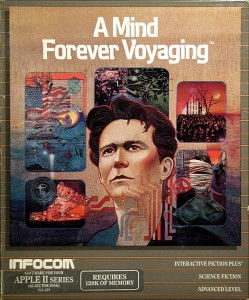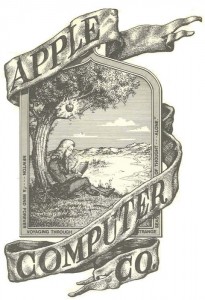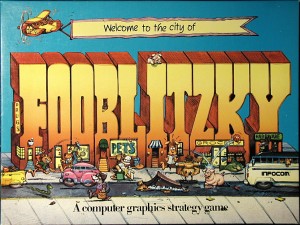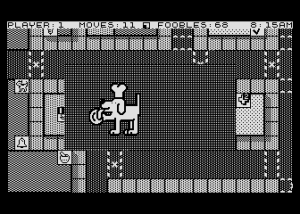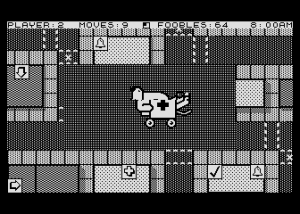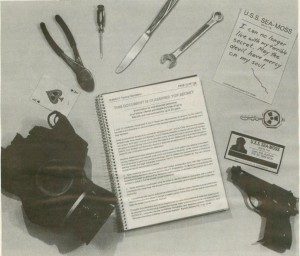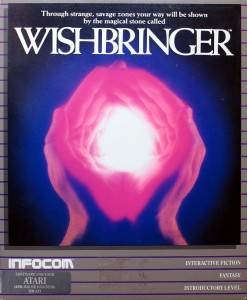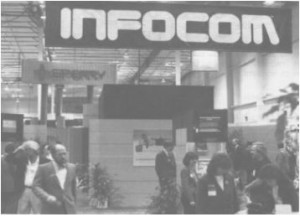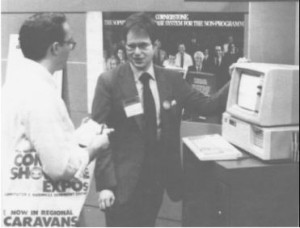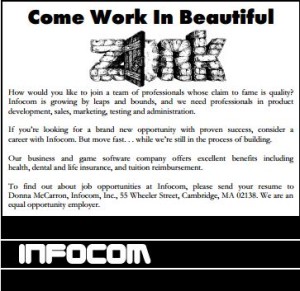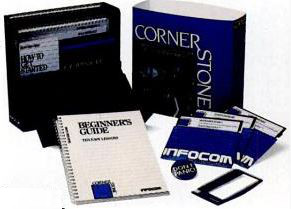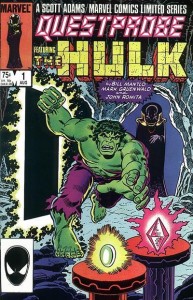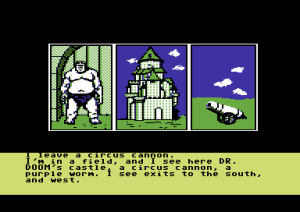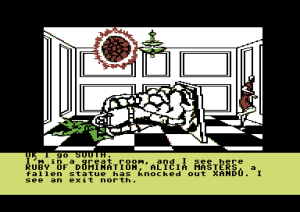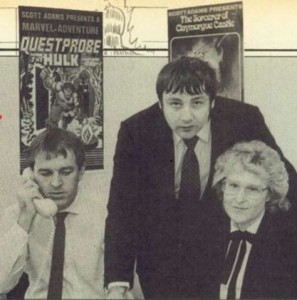Steve Meretzky earned the right to write A Mind Forever Voyaging. That, anyway, is one way to look at it, and one with which I believe many staffers at Infocom tacitly agreed. After his first game, Planetfall, his next two games had been works created to specifications with cheerful equanimity and breathtaking efficiency and not a trace of artistic angst. First there had been Sorcerer, the necessary second installment in the Enchanter trilogy that freed up Marc Blank to work on technology and Dave Lebling to write Suspect. And then of course there was The Hitchhiker’s Guide to the Galaxy, which fell into Meretzky’s lap because he was the only available Imp willing to play the subordinate role in a creative partnership with Douglas Adams. That game’s huge sales were almost certainly the only thing that allowed Infocom to survive (after a fashion) their disastrous 1985, thus making Meretzky in some sense the savior of everyone still employed there. Throw in the four contract-fulfilling Zork gamebooks he cranked out betwixt and between the computer games, plus all the help he gave to others with their designs, plus the way he just kept everyone insanely sane during all of the trials of the Cornerstone era with his parties and games and antics… yeah, Meretzky deserved carte blanche to make his next game exactly what he wanted it to be.
As funny a guy as he was, Meretzky was interested in being more than just Infocom’s go-to wacky comedy writer. Indeed, and even setting aside Floyd, anyone really looking at Planetfall can’t help but see an attention to science-fictional realism, even a certain amount of earnest worldbuilding, that its oft-cited similarity to Douglas Adams’s just-in-it-for-the-jokes settings and characters belies. Had he had his druthers, Meretzky’s follow-up to Planetfall may very well have been a carefully researched and very sober historical piece taking place aboard the Titanic. “Meretzky’s Titanic game” hung about Infocom so long and was proposed by him so many times that it became a running joke in itself. The rest of the company never warmed to the idea, feeling it lacked commercial potential — an extraordinary judgment call indeed in light of a certain movie from the following decade. Then again, Meretzky didn’t have Leonardo DiCaprio.
But in the immediate aftermath of Hitchhiker’s in late 1984, with complete carte blanche for the first and only time during his tenure with Infocom, Meretzky decided to go in another direction entirely. Even as he was basking in the glow of Hitchhiker’s huge initial sales and publicity, Ronald Reagan was defeating Walter Mondale in one of the biggest routs in American electoral history; Mondale carried exactly 1 state to Reagan’s 49.
The impetus to start working on it was Reagan’s reelection. I was appalled that he was not only reelected but reelected in a landslide. Everyone was talking about what an absorbing medium computer games in general and particularly interactive fiction was because even when you weren’t playing you were spending all your time thinking about it. You were always working on puzzles. When you were playing you were absorbed in it 100 percent, and when you weren’t playing part of your brain was still working on it, thinking about it.
I thought about how other media were constantly trying to get messages across, change people’s thinking. It seemed to me that interactive fiction could be an even more powerful medium for doing that. So that was my mission. I wanted to show people what a war-mongering, Christian-Right-pandering, environment-trashing, rights-trampling asshole Reagan was.
And of course the game was so successful that we’ve never had another President like that!
The question of just how to convey that message within the context of an interesting, playable work of interactive fiction was rather more fraught than the above description might imply. Could interactive fiction change hearts and minds the way that Art does it, not by offering reasoned arguments but by making the player really see and feel? Whatever else you could say about them, adventure games — even Infocom’s interactive fiction — hadn’t been doing a lot of that sort of thing. They’d been more than content to work within safe, established, inoffensive genre boundaries, a defensible enough choice at a time when just offering, say, a reasonably good interactive facsimile of a forgettable mystery novel could be rightly greeted as an amazing achievement. There had been glimpses of potential to do and be more, like Floyd’s death in Planetfall or Infidel‘s shocking ending. But could something like that be maintained over the course of an entire work? Sure, Meretzky could craft a broad satire in which Reagan would stand in for Lord Dimwit Flathead the Excessive, but he wanted to do something more thoughtful, more expressive.
Interactive fiction is an almost perversely limited medium from the perspective of a writer of static fiction. There are many, many things that it just can’t do well, and any sort of direct facsimile of literary fiction, even literary science fiction, is one of them. Such works invariably end up being either fundamentally un-interactive, the proverbial railroaded novel separated by the occasional command prompt, or impossible to implement; the grand bargains and life choices that are the stuff of literature represent a combinatorial explosion with which interactive fiction is utterly unequipped to deal. This doesn’t mean that interactive fiction can’t move and change us. It does, however, mean that its authors must approach their goals in different, more oblique ways than conventional authors.
Steve Meretzky, about to craft the first largely puzzleless work of interactive fiction ever to be released by a publisher, intuitively grasped this reality that has eluded many would-be “literary” interactive-fiction authors since. The central premise of the game that would become A Mind Forever Voyaging came to him one day at his breakfast table. It was an idea that played perfectly to his medium’s strengths. Interactive fiction does setting incredibly well, perhaps better than it does anything else. Intricate plotting it does painfully and reluctantly and usually clunkily. Therefore why not make the player not so much a participant in the plot as an observer? He would make the player’s avatar a “self-aware computer” observing the effects of Republican policies over a span of decades inside a simulation. There would still be room for player agency, secrets to be found and hidden corners to be investigated. But the larger-scale machinery of the simulation could grind on largely unaffected by this. A cop out? Perhaps, but also a brilliant one. The rest of the story — about the computer, named PRISM, and how he came to be — now began to flow.
Cop out or not, Meretzky’s idea was still hugely ambitious. He wanted to do nothing less than create a whole city in software not once but five times — the same place over a span of five decades. And woven around this central simulation would have to be a lot more material relating to PRISM’s operation and his exploratory mission. The scale of the whole was out of line with anything Infocom had attempted since the original PDP-10 Zork — you know, the one they’d had to chop into pieces to get onto microcomputers. Thankfully, Meretzky had a trump card in the form of a new technology that had been born at Infocom during 1984.
The system would be known to the world as Interactive Fiction Plus, and internally as either the version 4 Z-Machine or just EZIP. (“Extended Z-Machine Interpreter”; ordinary interpreters were customarily called “ZIPs,” a name which has nothing to do with the compression format of the same name.) The Imps had been growing increasingly frustrated with the Z-Machine, with its sharp limitations of 128 K of total code and data (allowing at best a short novella’s worth of text), its maximum of 256 objects (a much more restrictive number than it might appear at first glance when you consider that objects included not only items in the game but also rooms, your avatar and other people and animals, and even various abstractions like compass directions), its support for nothing more elaborate in the way of onscreen formatting than a fixed status line and a scrolling stream of text. They were aching to push their worlds and their parsers further than the cramped Z-Machine could allow.
Marc Blank and Mike Berlyn, who made a surprising but enduring pair of running buddies, worked toward a next-generation technology for interactive fiction even as Berlyn was also heading the cross-platform graphics initiative and designing Fooblitzky and also writing Cutthroats. They dreamed of a parser capable of understanding “kinds and qualities,” capable of facilitating real conversations with other characters. Blank:
We worked on it for quite a while before we realized it just wasn’t getting anywhere. It was too open-ended; it was hard to know where to go with it and what was going to be the interesting part of it. Or were you turning it into a simulation, where you build a big world you can wander around in but not much happens? We kind of hit a wall.
It of course didn’t help that Cornerstone was continuing to suck more and more oxygen away from such blue-sky initiatives, nor that Blank himself was getting more and more distracted and embroiled in his disputes with Al Vezza and the rest of the Board. Berlyn and Blank’s grander plans never saw the light of day. However, the more plebeian technological foundation Blank had laid to support them did as Interactive Fiction Plus.
EZIP extended the basic Z-Machine in a fairly elegant, straightforward way. Maximum story size doubled to 256 K. The maximum number of objects expanded to a number big enough that nobody would ever, ever — even in the modern era — need to think about it again. A modest new set of opcodes building on work that had been begun to facilitate Seastalker‘s sonar display gave some new options for text layout and screen formatting. And that was about it really. Still, it should be just enough to let Meretzky build his city.
The luxuries of EZIP didn’t come without a steep price tag. Getting EZIP onto many of the target machines stretched the considerable talents of Dan Horn’s Micro Group to the limit. Andrew Kaluzniacki, for instance, had to invent a new filesystem for the Apple II to increase the capacity of a disk side. Even with such wizardry the new system was simply too much for a huge swathe of the many machines Infocom supported with the standard Z-Machine, like the Commodore 64, the Atari 8-bit line, and the many extant Apple IIs with less than 128 K of memory. The lowest common denominator for EZIP would have to be a machine with 128 K and an 80-column text display.
That looked like a dangerous move, especially in 1984 before the arrival of many of the more powerful consumer-focused machines of the latter 1980s like the Commodore 128 and Amiga and the Atari ST. But even then it wasn’t completely unprecedented. Sierra had elected to make 128 K a requirement for King’s Quest and its sequels, and had done quite well commercially by it. In fact, that game seemed to have discovered an audience of players with higher-speced machines who bought it because it required 128 K and thus was presumably more advanced than others on the market. Perhaps a similar touch of snobbery would rub off on Interactive Fiction Plus.
It was just one more way in which Meretzky’s project was an iffy proposition. Yet he got remarkably little pushback from marketing or anyone else about his game. He had gotten it off the ground at the perfect time, just before the disasters of 1985 would make such a risky project look crazy indeed to the embattled company. By the time the full horror of their financial situation started to become clear around mid-year, the game was far too far along to stop even had anyone seriously wanted to. But it’s far from clear that anyone did. Even Dave Lebling, the most conservative of the Imps and thus the most likely to find Meretzky’s game objectionable, declared that he was fine with the game, that it was a point of view which Meretzky had every right to express.
It was “Hollywood” Dave Anderson, a key tester who would later become an Implementor in his own right, who gave the project its enduring label inside Infocom: “Steve Meretzky’s Interiors.” Interiors, for those of you who aren’t Woody Allen fans, was Allen’s 1978 follow-up to the Best Picture-winning Annie Hall. All of Allen’s previous films had been comedies, if funny in increasingly nuanced ways. Interiors, however, was a complete departure, a somber Bergman-esque character study that begins with a separation and ends with a suicide, with nary a laugh in between. Allen later incorporated the reaction of many of his fans into Stardust Memories, whose filmmaker protagonist is constantly being asked when he’s going to get back to making “funny” movies again. Anderson’s epithet knowingly or unknowingly foreshadowed the similar reaction many of Infocom’s fans would soon have to Meretzky’s great artistic experiment.
Meretzky found a particularly great supporter and booster in Jon Palace, who still names the game today as by far his favorite. Palace, who when hired at the beginning of 1984 had not even known what interactive fiction was, had become one of the foremost proponents within Infocom of the medium’s potential to be meaningful and relevant and beautiful — to be Art. Many of the more experimental games of Infocom’s second half, beginning with A Mind Forever Voyaging, owe Palace an enormous debt for his dedication to the proposition of Infocom interactive fiction as something more than endless Zork rehashes even as times got leaner and commercial pressures mounted. Palace:
I really tried to emphasize the storytelling aspect rather than the puzzle aspect just because that’s what I liked. AMFV started as a story without puzzles, and even though puzzles went back in AMFV was about the story. It wasn’t about the puzzles. I was very, very pleased with that one.
At the same time, its reception was definitely mixed. A lot of the rabid puzzle-loving fans did not like it. They might have liked the politics — or maybe they didn’t like the politics — but some people did not like the lack of puzzles. But for me it was, like, “Great! Look, we can really elicit an emotional response!” — an emotional response which isn’t trite. That for me was the best.
Meretzky hugely valued Palace’s unstinting “advice and support” as he ventured into these uncharted waters, thanking him lastly and most prominently in the acknowledgements of the finished game.
Called simply PRISM through most of its development, A Mind Forever Voyaging‘s final name is lifted from a passage in William Wordsworth’s lifetime endeavor, the epic narrative poem The Prelude. There it’s applied to Isaac Newton, a statue of whom stood near the “nook obscure” where the young Wordsworth slept at Cambridge:
And from my pillow, looking forth by light
Of moon or favouring stars, I could behold
The antechapel where the statue stood
Of Newton with his prism and silent face,
The marble index of a mind for ever
Voyaging through strange seas of Thought, alone.
It’s a passage that already had a place in hacker lore long before Meretzky stumbled upon it in Bartlett’s Familiar Quotations. The first logo deployed by the nascent Apple Computer, created by the company’s forgotten third founder Ronald Gerald Wayne using pen and ink, consisted of a picture of Newton leaning against a tree, with the end of the passage quoted above running along the border. The very un-Apple-like logo didn’t last long; neither did Wayne, who sold his share back to Steve Jobs and Steve Wozniak for $800 less than two weeks later.
While the strong political message remained, A Mind Forever Voyaging gradually evolved into a scenario much more complicated than Meretzky’s initial determination simply to out Reagan as an “asshole” might imply. Drawing upon the knowledge of artificial-intelligence theory which the collection of refugees from MIT’s Lab for Computer Science surrounding him possessed in spades, he created a detailed backstory for Perry Simm — i.e., PRISM — as an entity who has unknowingly lived his first two decades inside a computer simulation before suddenly being jerked out of his simulated reality and into the real world, to be assigned the mission of investigating the likely effects of one Senator Richard Ryder’s Plan for Renewed National Purpose on his home town, the fictional Rockvil, South Dakota, ten years in the future. The “present” in the game’s world is 2031, with simulated futures eventually reaching as far as 2081, making A Mind Forever Voyaging one more entry in science fiction’s huge catalog of works that are ostensibly about the future but really about the here and now. The implications and philosophical questions that surround Perry’s simulated version of existence, many of which the game doesn’t directly address and sometimes seems oddly oblivious of, end up being at least as intriguing as its more straightforward political message.
A Mind Forever Voyaging isn’t the unblemished masterpiece many fans accuse it of being. The writing is compelling in many places, cursory in other places, gawky and awkward in yet others — sometimes endearingly so and sometimes just, well, awkwardly so. The sprawling city of Rockvil itself, impressive as it is as by far the largest contiguous space ever to appear in an Infocom game, is also often only sketchily implemented and described. (Much of this is certainly down to the space limitations of even the version 4 Z-Machine; the final game file reportedly has about ten bytes to spare, not enough for even a single extra sentence.) The dystopia that gradually emerges as you progress further into the simulation is, to say the least, rather derivative of Nineteen Eighty-Four; even some of the vocabulary, like “lustfilm” and “hatefilm,” seems lifted straight from a Newspeak dictionary. And as political commentary it’s at best simplistic and heavy-handed.
Yet A Mind Forever Voyaging manages the neat trick of being interesting because of its flaws rather than despite them. It’s a big, messy piece of work that tries to do a lot of things with mixed success even as it sort of accidentally does other things that I’m not entirely sure its maker was even aware of. Its nooks and crannies offer a downright bewildering number of things to talk about, seemingly endless philosophical tangents to wander down. While I can’t promise we’ll get to all of them, we are going to take our time here, not only because it’s one of the most significant games in interactive-fiction history but also because — and more so, really — the ideas it contains are just so interesting to think about. Thus the “Part 1” in this article’s title. With its history and technical logistics behind us, we’ll be ready next time to delve into the game itself.
(This and the following articles are drawn from, in addition to the game itself, my usual Infocom source of Jason Scott’s Get Lamp interview archives. Also useful was the Steve Meretzky interview in Richard Rouse III’s Game Design: Theory and Practice.)
